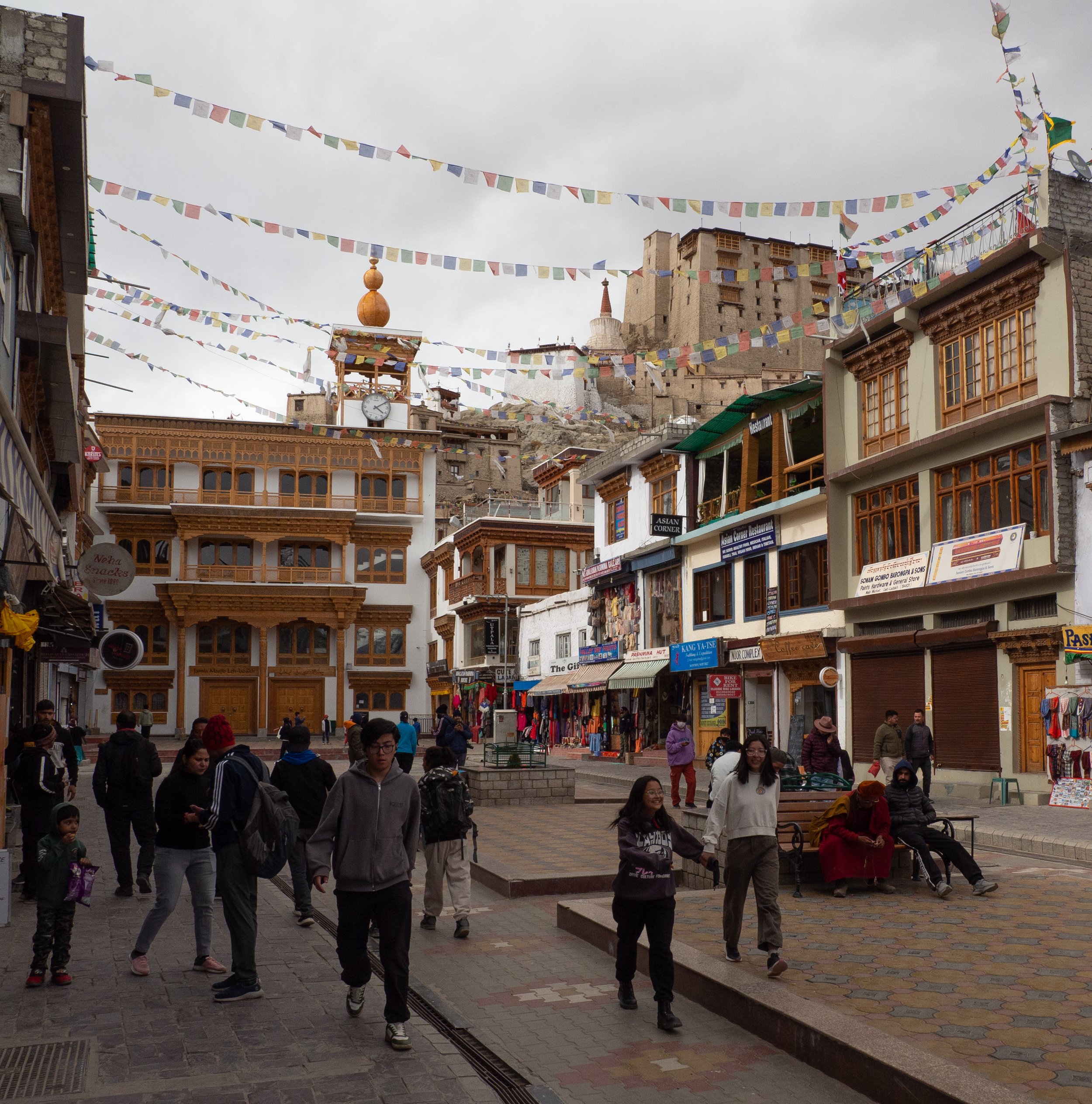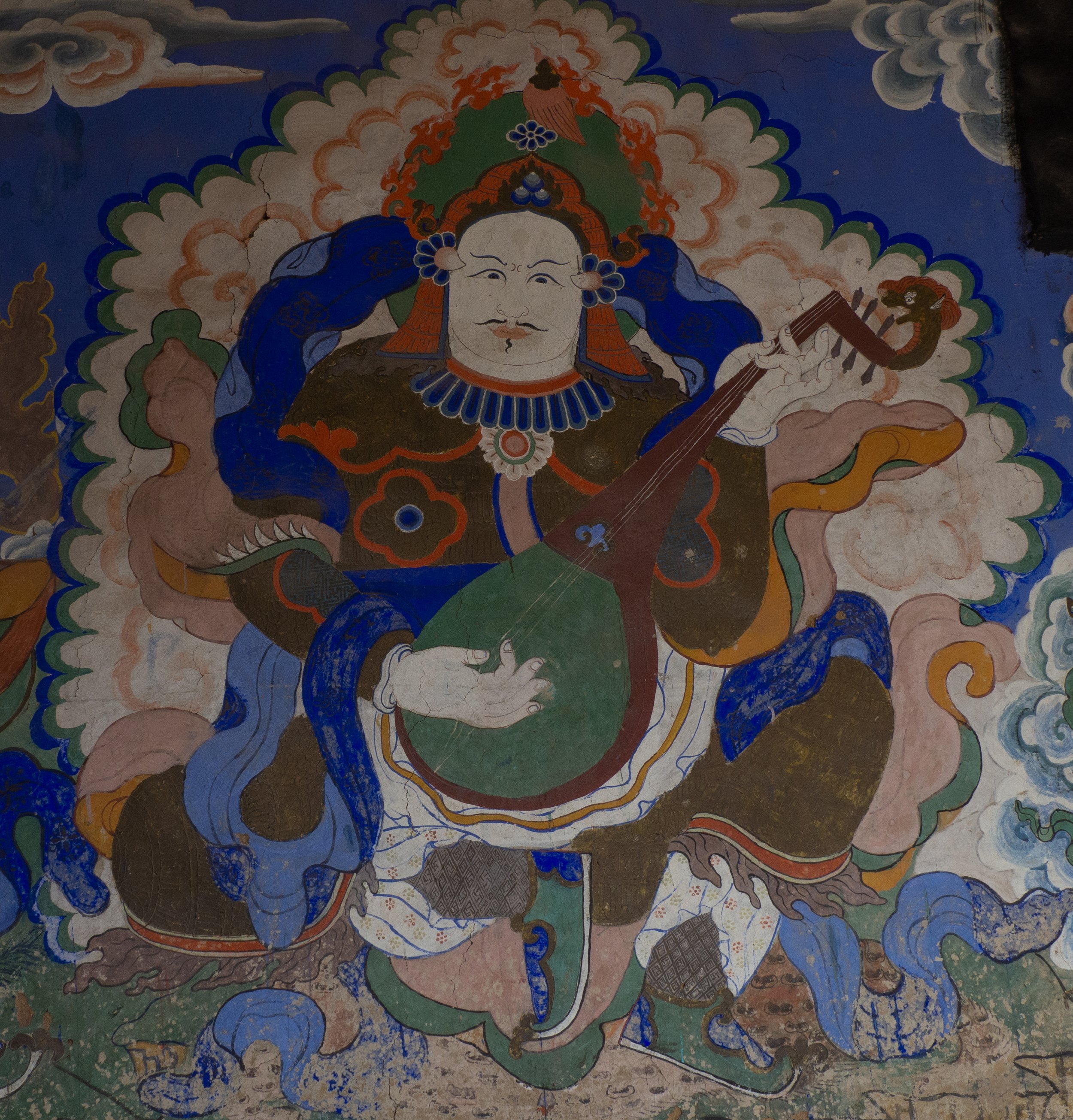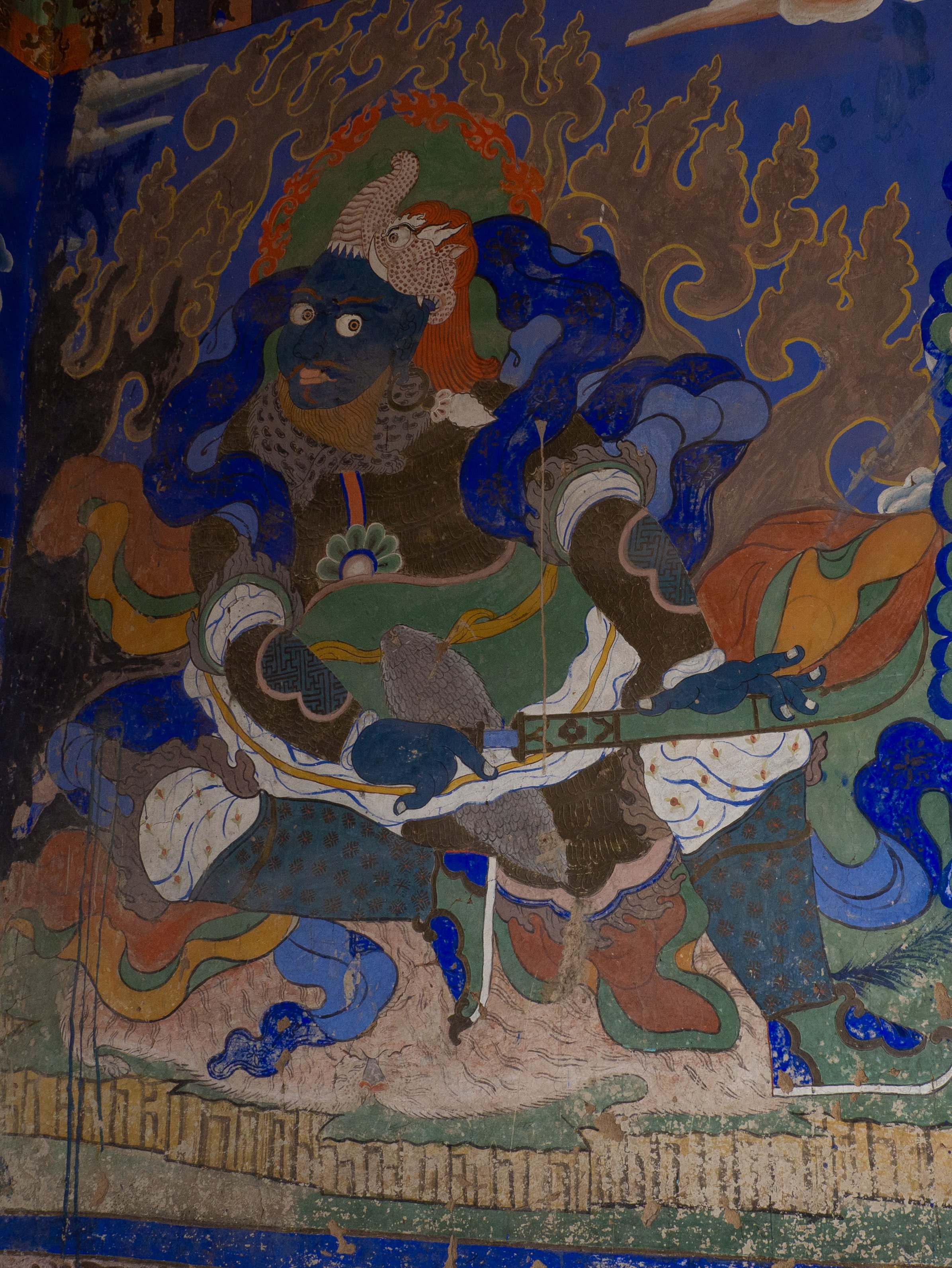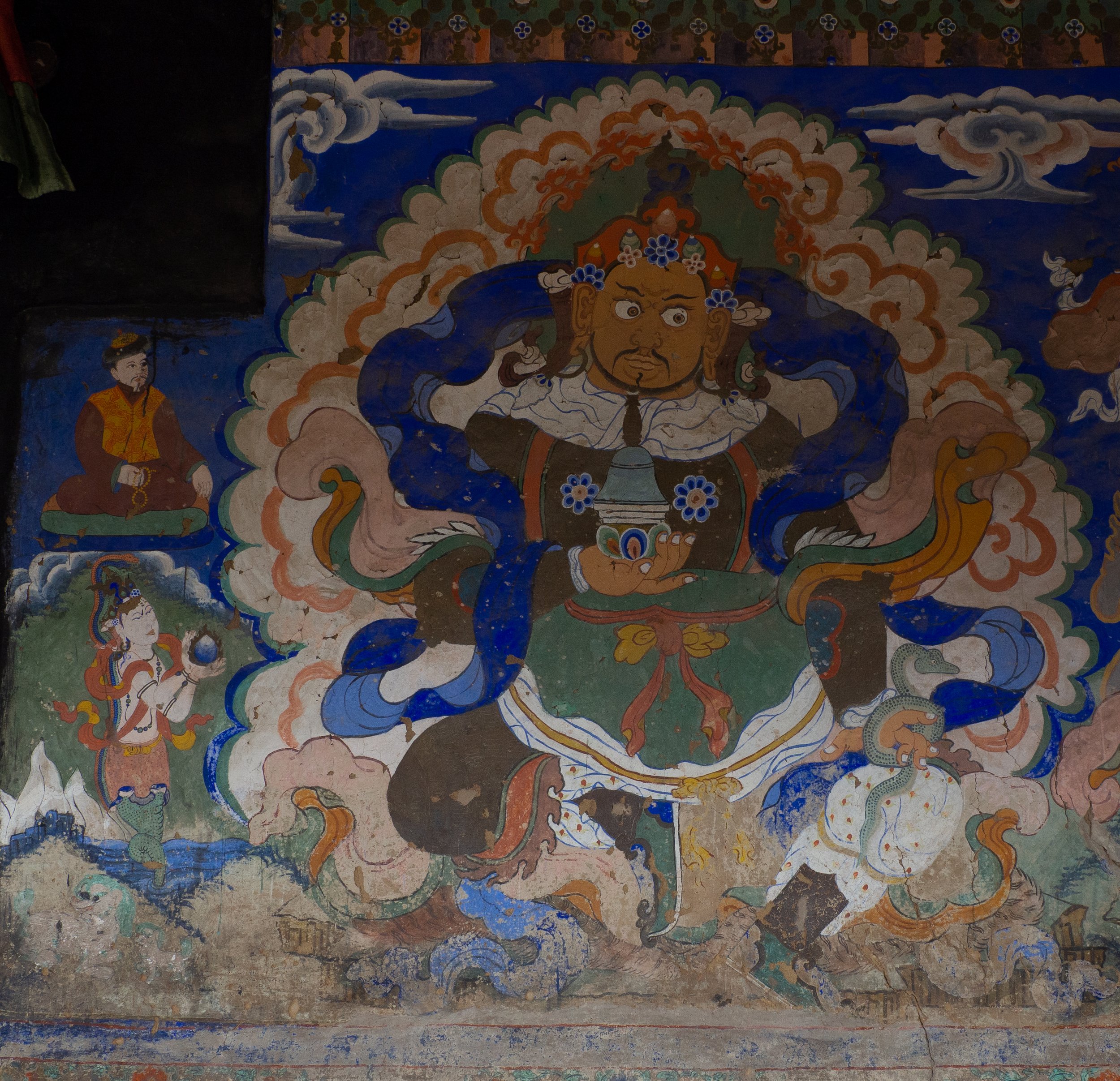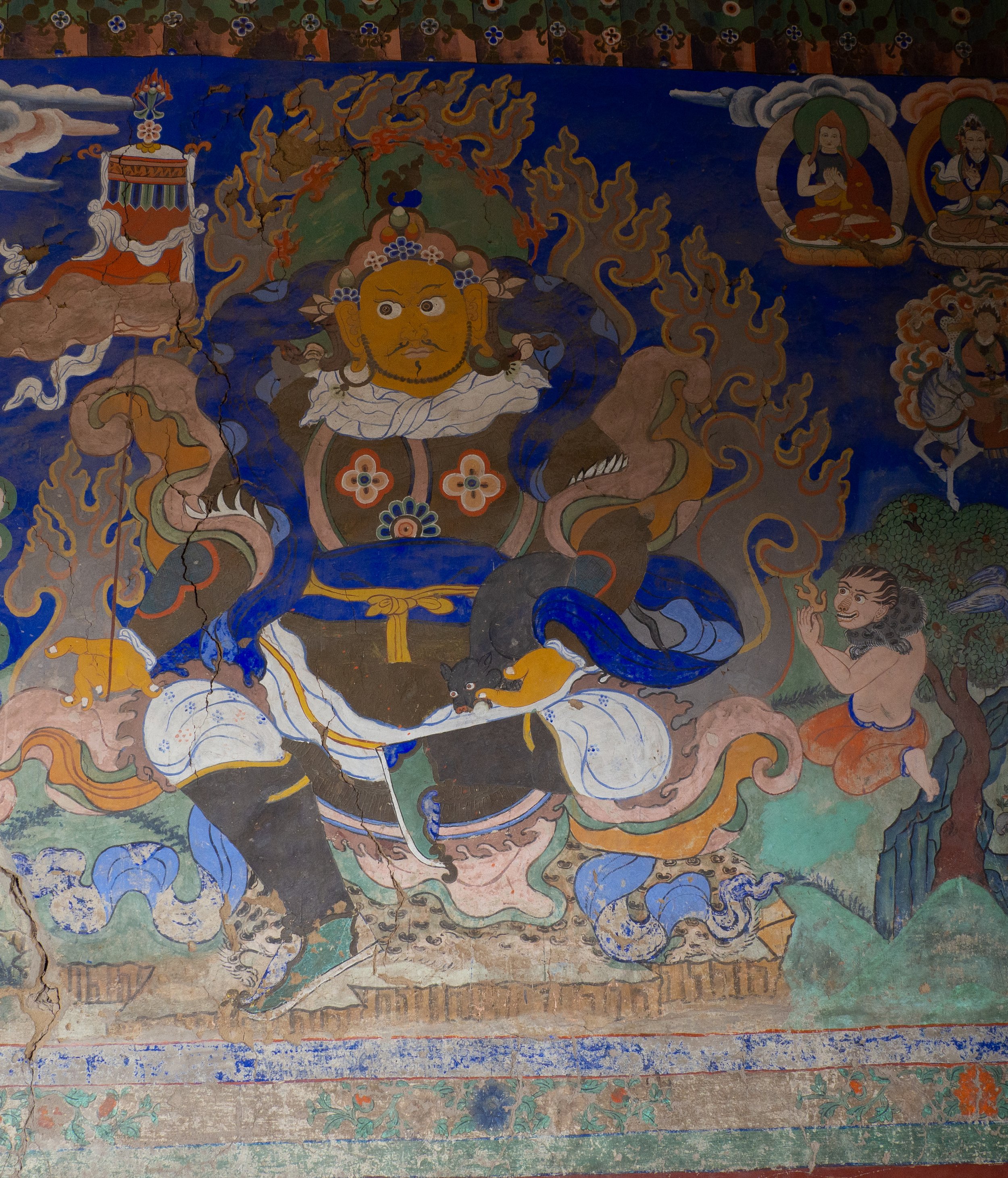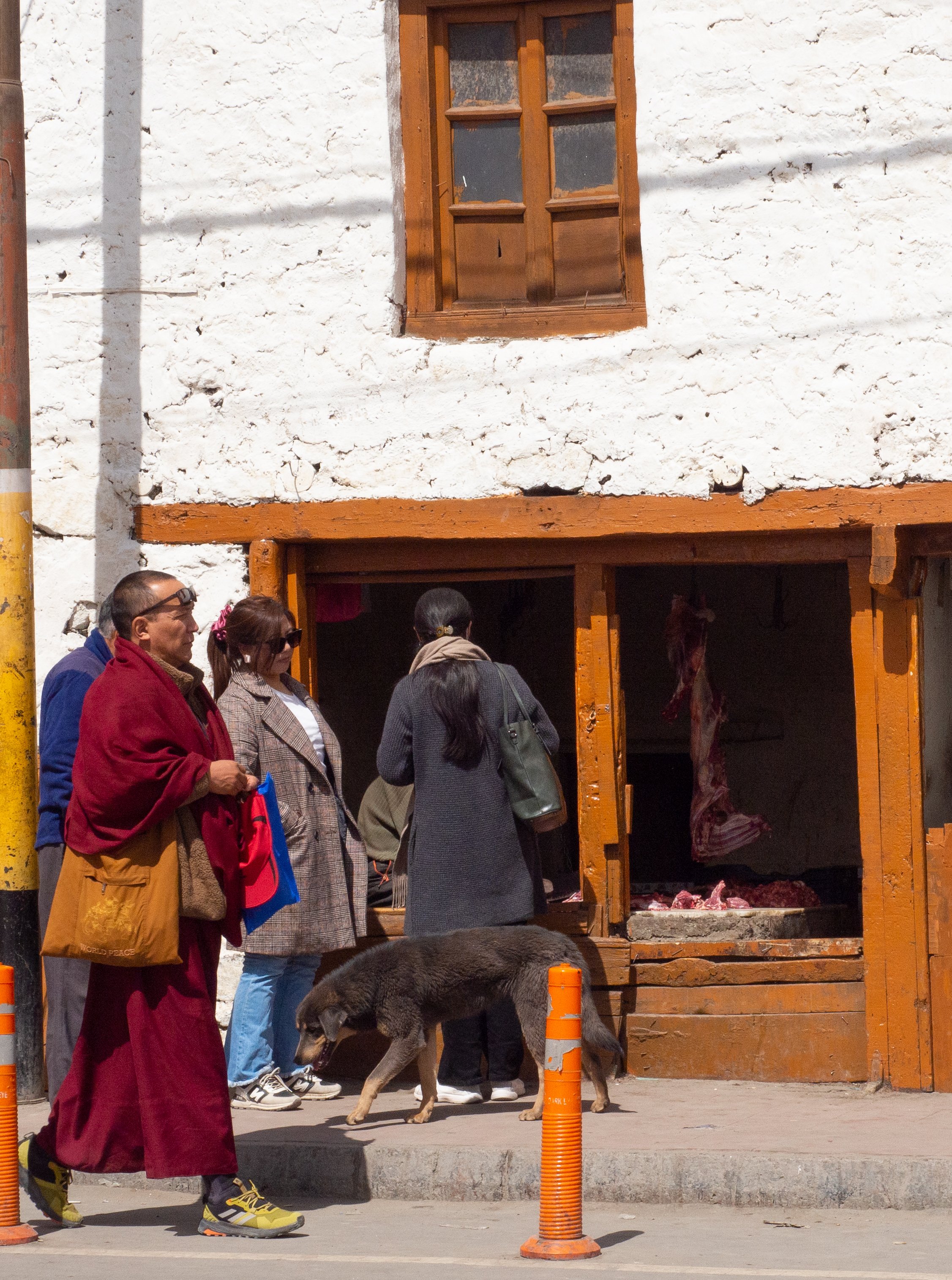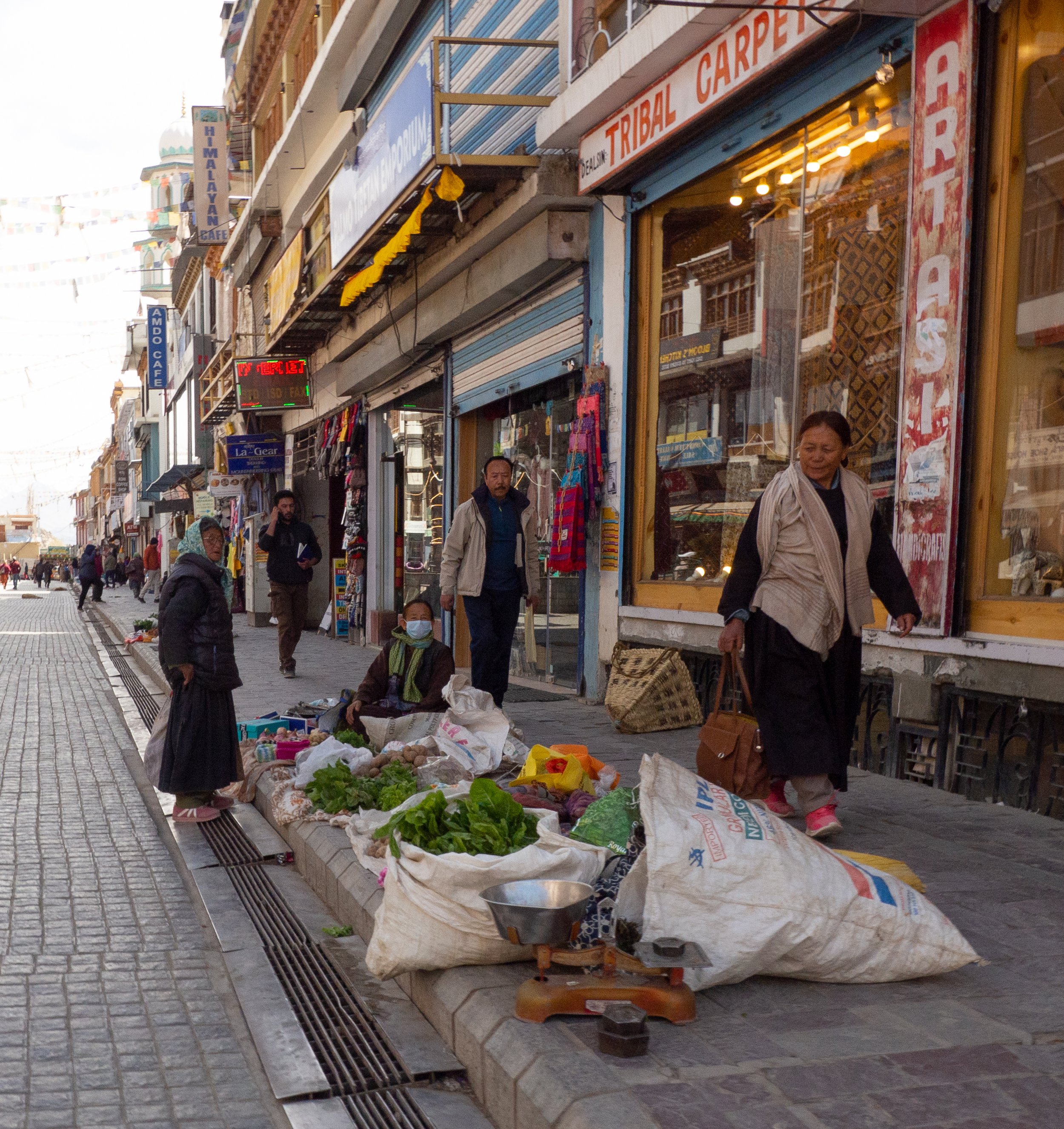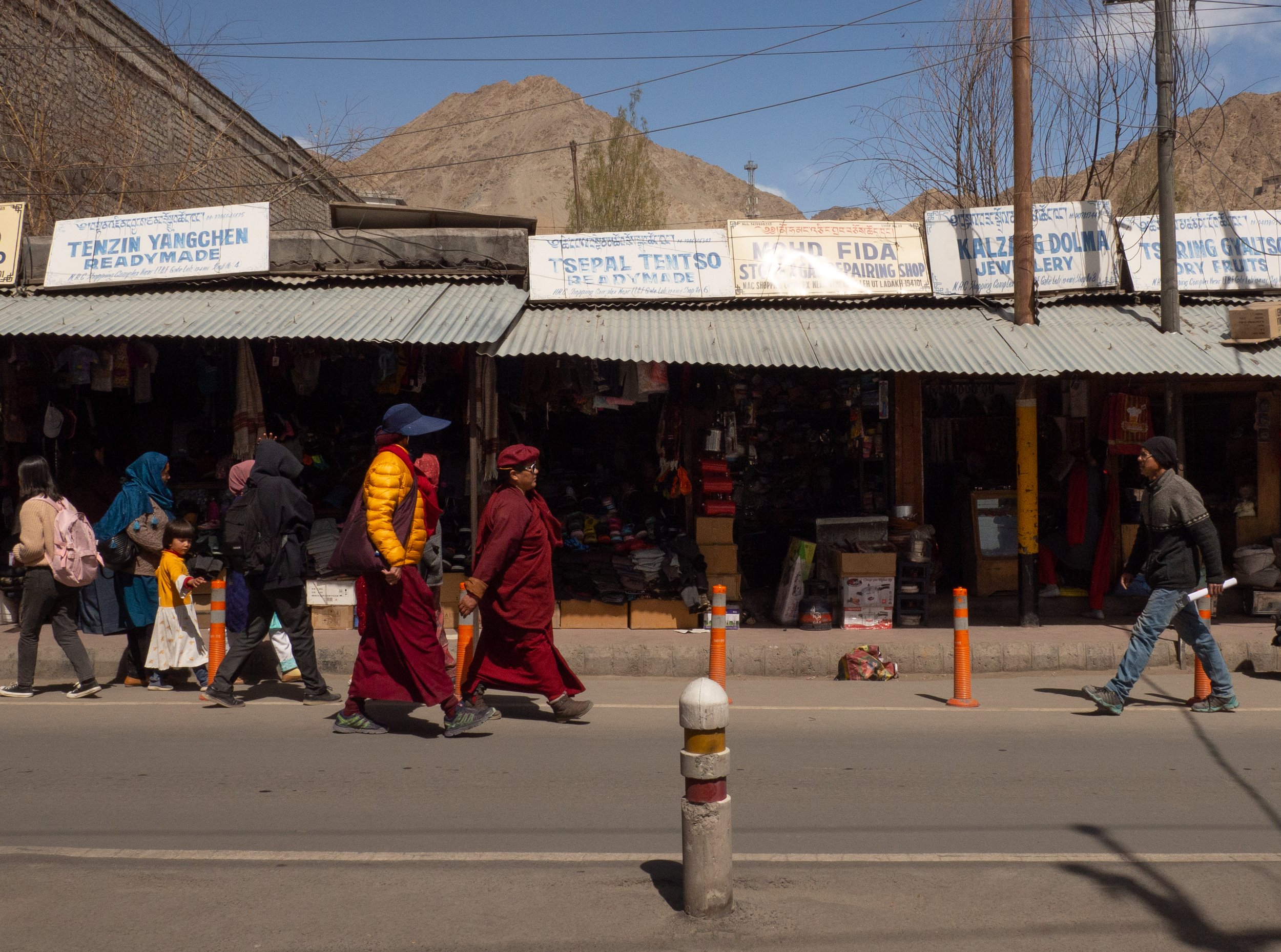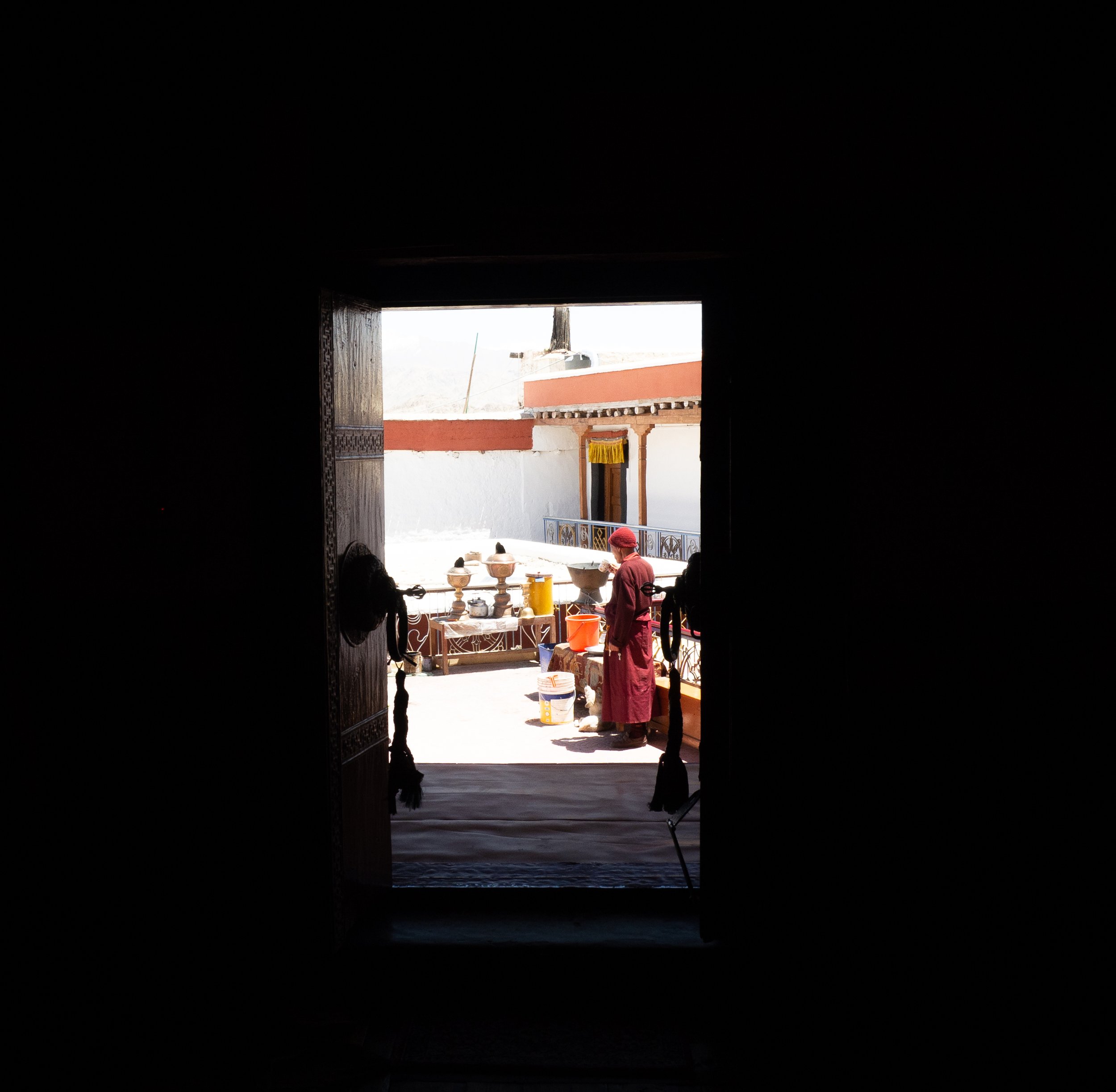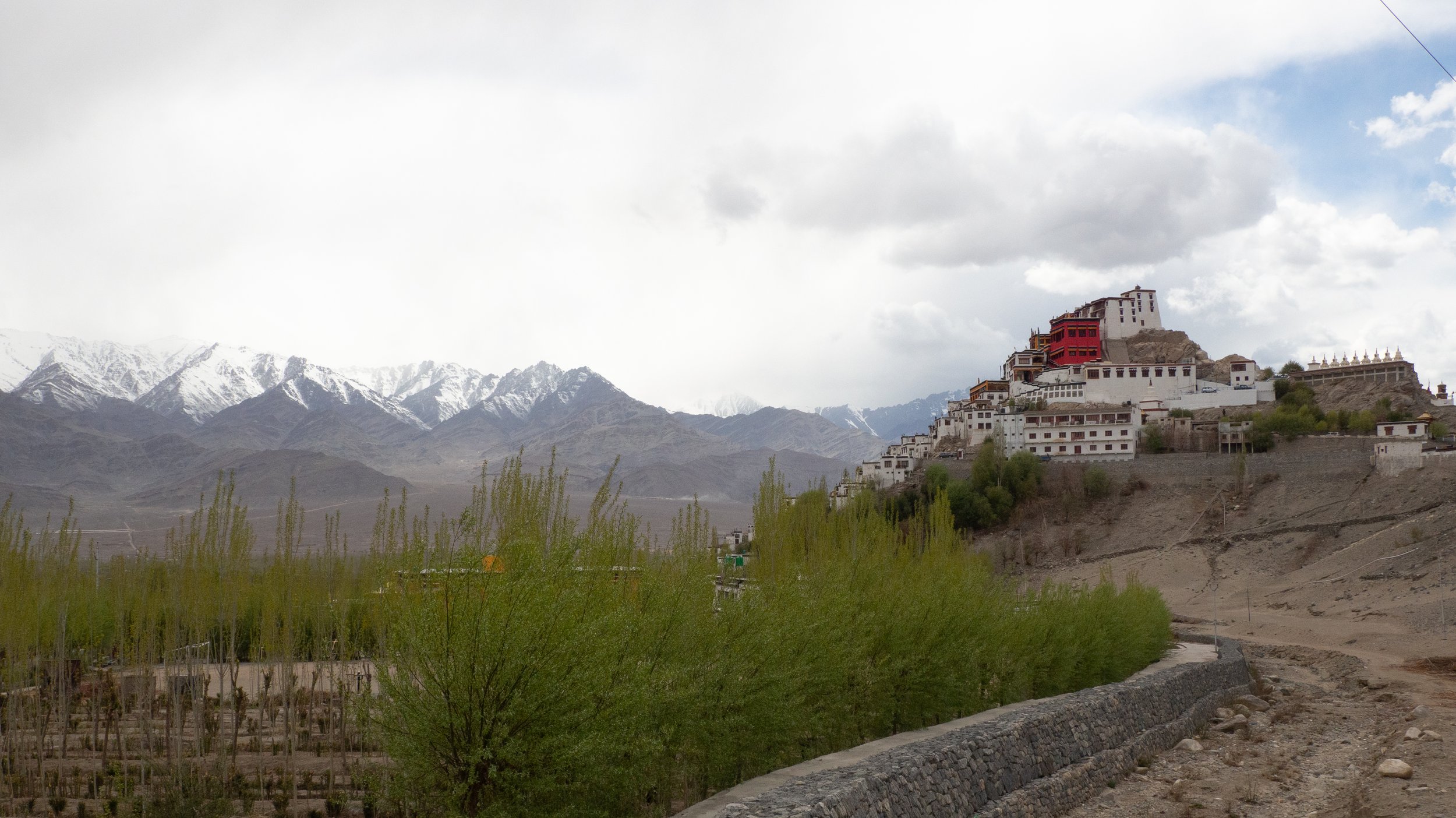ལ་དྭགས
Mornings in Ladakh are tough if you're an early riser. Not much happens before 9:30 and to be out and about before that time means wandering around roads devoid even of life; even stray dogs are still curled up in furry balls. The only sound, if you exclude a recording of the mantra om mani padme hum played to nobody in Leh's Bazaar, is the rumble of the first military jet of the day as it loses altitude in the valley on its way to Kushok Bakula Rimpochee airport.
Civilian airlines, and the local populace, will eventually stir awake, but the first risers - or landings - inevitably wear camouflage. And that shouldn't be a surprise: even a distracted observer can't deny that the Indian military is omnipresent in Ladakh.
Bases dot the land, ubiquitous as prayer wheels. Convoys of trucks trundle along the Manali road, shrouded in clouds of mephitic exhausts. Helicopters buzz overhead and, one evening, the skies echoed with the roar of a fighter jet returning from a mission over the mountains.
Memories of Xinjiang and the West Bank flash in my head, but only for a moment. This doesn't feel like an occupation, and not just because of the oddly quaint spectacle of an army that hand-paints all its signs.
Soldiers don't hide behind concrete battlements like in Bethlehem and don't patrol the streets with bayonets fixed on their rifles as they did in Kashgar. In fact, it's rare to see any of them armed while out in public. Indian Army soldiers, here, are quick to smile, wave and wish "Namaste" to the passer-by. When a large dog woke up, saw me and chose violence it was an Army truck driver who wedged his vehicle between myself and the aggro quadruped. A trader in Leh summarised it well: "Yes, this isn't Kashmir".
I came to Ladakh expecting it to be remote and isolated. A land of tiny villages that time forgot, lost in the Himalaya's rain shadow. I'd gotten the geography right, but from a human point of view, well, Ladakh was to teach me a lesson.
La-dags, in Tibetan, means "land of high passes". And where there are passes, there are people walking across them. Tibetan Buddhists, Kashmiris, Muslims from the northern steppes, Brokpas villagers rubbed elbows in each valley; in Leh, their intermingling made that dusty city exotically cosmopolitan. Minarets, pagodas and the meringue-white dome of the Sikh Gurdwara punctuated a cityscape of flat roofs and corrugated metal.
Everything hinted at a long tradition of interchange. Monasteries, far from being the isolated retreat that their local name - gompa - suggested, looked at Tibet or Bhutan; even the man who, according to legend, brought Buddhism to these lands was well travelled. Padmasambhava, or Guru Rimpoche, converted Tibet to the religion but had himself originated in today's Pakistan. In his ecumenical journey he co-opted the preexisting Bon deities, finding them a place in the frescoes that adorn the ante-chamber of every dukhang. More deities came from the rich Hindu pantheon.
As tantalising as these hints were, there was no denying that it all felt as something from the past. The military was here to guard the borders, not oppress the populace: Pakistan and China were close by, and the roads that once led there were no longer passable. Maps, here, were riddled with dotted lines marked "Occupied by China" or "Line of separation". You needed permits to get to the border zones.
I met a man in his coffee shop. His place of business was a room at the edge of Leh's Old Town, with wide windows revealing a vintage Faema coffee maker. It was the stylised Duomo logo, pressed on the metal of the machine, that lured me in.
We never exchanged names, though over the days I was to visit his establishment plenty of times. Somehow it didn't feel necessary. He had the long, grey beard of a Sufi mystic and his hazelnut eyes sat in the middle of a topographic map of wrinkles. Perhaps I'm projecting, but the more I looked into those eyes the more I saw sadness. In a soft tone, with the gentle demeanour typical of well-educated Indians, he described the Leh of yesteryear.
Leh was one of the nodes of the Silk Road, a crucial hub on its southern branch. Here, caravans coming from the Ganges plains met up with those who'd crossed the deserts and cordilleras of the north. Traders from Delhi and places I knew and loved - Yarkand, Dzhungaria, Tibet, the Pamirs, Bukhara - would meet here.
North and south parlayed in Leh and, in order to smooth any wrinkles, a class of multi-lingual professionals emerged: among them were my interlocutor's father and uncles. Tibetan Muslims by origin, they crossed the Himalayas to Ladakh but maintained close contacts not only with Lhasa, but also with Kashmir and Yarkand. When I referred to Kashgar, his eyes brightened. Yes, he said, they had cousins there.
Traders needed translators, he explained. His family did that, run a caravanserai, matched buyers with sellers, arbitrated controversies, provided credit and mediated through their cousins in Tibet and Yarkand. They, and many like them, were part of the ecosystem that kept Ladakh connected, deserts and mountains be damned.
Then, it came all crashing down. "Partition was a shock", he started. In 1947, with characteristic haste and lack of planning, the Brits abandoned the Subcontinent and unleashed a catastrophe. In Ladakh, Pakistani troops invaded from Kashmir while the Indians rushed from Manali to counter them. Battles were fought outside Leh and, after India emerged victorious, the roads to the Karakoram were severed. The coup de grâce, however, came a little later, in the 1950s.
"In 1954, trade with Tibet was closed by China" he deadpanned. Communist China, having invaded Tibet in 1950, increased its grip on the region and decided to cut off the networks of routes that had, for millennia, linked the two sides of the Himalayas. Almost overnight, trade came to a stop. "Caravans couldn't cross anymore. My father and uncles were physically sick".
Slowly, the erstwhile traders adapted to the new reality. Tibetan refugees came pouring from the North, the Dalai Lama among them. China and India fought in 1962, in 1967 and then again a few years ago, in 2020. The Army remained, just in case matters flared up again.
"My father never returned to Lhasa", my new friend continued. "One of his brothers did, but then at some point we caught word that our house in Lhasa was demolished, and our relatives scattered". He went back to arrange some cakes in a glass case. "We never returned. No one does, or you end up like the head of Hemis monastery". I nodded. Rema Rimpoche, the sixth incarnation of the head lama of the monastery where I'd gone looking for a snow leopard pelt, had gone to Tibet to further his studies but was never allowed back by Beijing.
Could things change, I asked the coffee shop owner. Could ideas and peoples flow again across the mountains, as they had done for centuries?
The man paused for a moment, weighing up the question. Then he looked out, into the busy street. "Only if those in power - all of them" he added with the wave of a finger "stop quarrelling with one another".
We fell silent, for we both knew that there was no chance of that.

